ZOOLANDER: STORY OF A RISING STAR

Some iconic boulders at Zoolander bouldering area. Climbers: Gavriel Jecan and Sontayed Asavahame.
When people think about climbing in Thailand, what generally comes in mind are the towering limestone cliffs of Southern Thailand with its dramatic Andaman sea backdrops. Fair enough, the climbing there is amazing. However, thinking that this is the only climbing scene and sole climbing destination in the Kingdom would overlook a huge part of the growing Thai climbing community and a surprising diversity of crags. Within the past 10 years international and local climbers have explored the kingdom for new options, leading to the development of climbing areas near Krabi and Kho Thao and in the central and northern regions of Thailand. Besides an increasing number of indoor climbing gyms, sport Climbing areas include: Buddhachai National Park, Khao Jeen Lair, Khao Khongchai, Khao Kra- Lhoke, Khao Pabet Noi, Khao Yoi, Tham Phra Camp, Wat Tam Khao Boon, Chiang Mai – Crazy Horse Buttress, Sukhothai. In addition to sport climbing areas there has been an increasing interest for bouldering, including in Koh Tao, an island in the Gulf of Thailand, but mostly in the Korat Plateau (Sikhiu, Chaiyaphum, NamPhong (currently closed to climbing) and Zoolander), a vast sandstone area in Northeastern Thailand known for its incredible boulders and high quality rock.
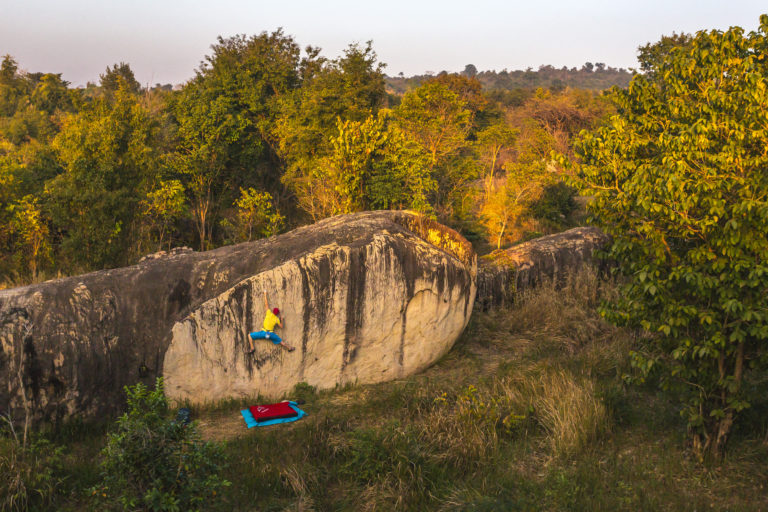
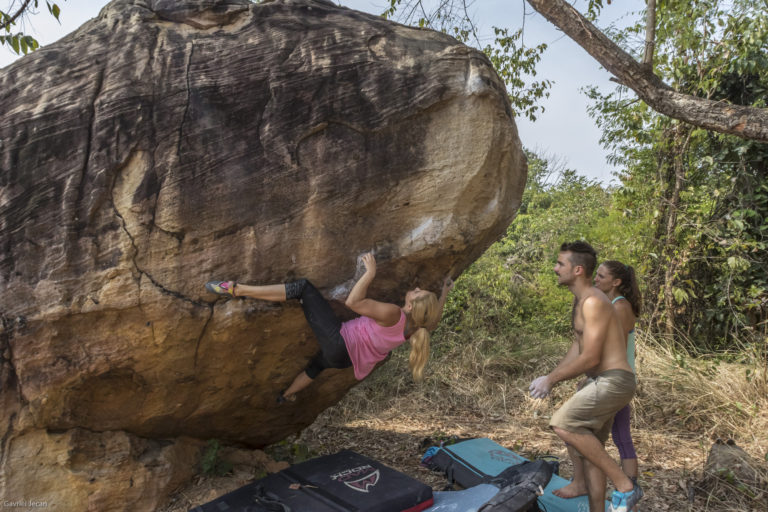
Nam Phong National Park, Khon Kaen, before climbing banned.
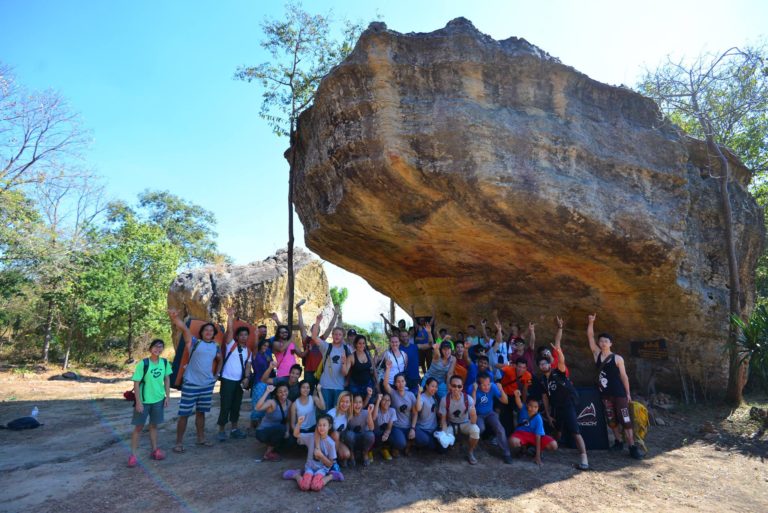
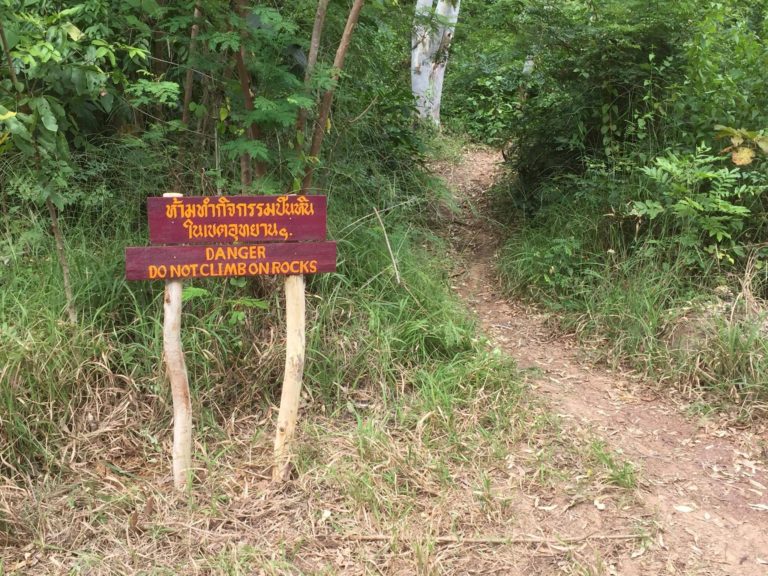
The 1stKhon Kaen Bouldering festival at Nam Phong National Park in 2017 resulting in climbing banned in Nam Phong.
Following the development of Sikhiu bouldering area by Camille Guignard et al., the discovery and development of NamPhong National Park bouldering area by Gavriel Jecan, Pierre Echaubard and Matt Folley led to a boost in climbing in the Northeastern region of Thailand due to its proximity to the provincial capital Khon Kaen city and ease of access. Several pro climbers including Alex Johnson, Sasha Digiulian, and Kati Hetrick, as well as several Asian elite climbers such as Liting Xu from Singapore and Puntarika Tunyavanich, Thailand’s national team leading climber visited the area and developed numerous hard lines which culminated in the hosting of the first Khon Kaen Bouldering festival in 2017 with more than 100 participants. Despite this success and years of collaboration with local national park officers, the National Park head office in Bangkok decided to no longer allow bouldering in the park, a decision still in hold at the time of writing.
While Namphong Bouldering was burgeoning in the year 2015-2016, Khon Kaen Climbing Club was created by its core members and original developer Gecan, Echaubard and Foley strongly supported by Wan (Panitan Jutaporn) who became the first KKCC manager. Following Namphong bouldering restriction, Wan urgently participated in a meeting with the Khon Kaen tourism council to discuss the closure of NamPhong bouldering and its impact on the growing outdoor tourism that Khon Kaen province started to value and support. During what became an historic meeting, Wan was introduced to Thanachon the acting director of the Khon Kaen Zoo who invited the Khon Kaen Climbing Club to explore the zoo’s vast property to assess its bouldering potential. In November 2017, following this formal invitation, Wan, accompanied by Gavriel Jecan, went on a first exploration. They discovered a seemingly infinite number of boulders of all shapes and heights in a typical dry deciduous forest open enough to allow easy access to most boulders. It was a huge relief for KKCC members after Namphong disappointment. Initial developments took place soon after this first visit.

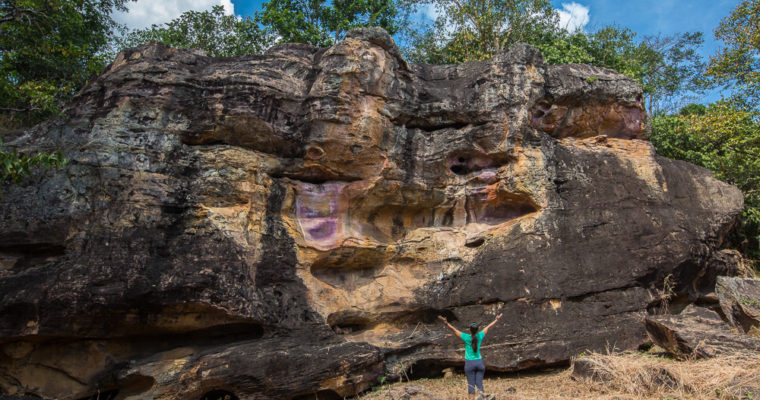
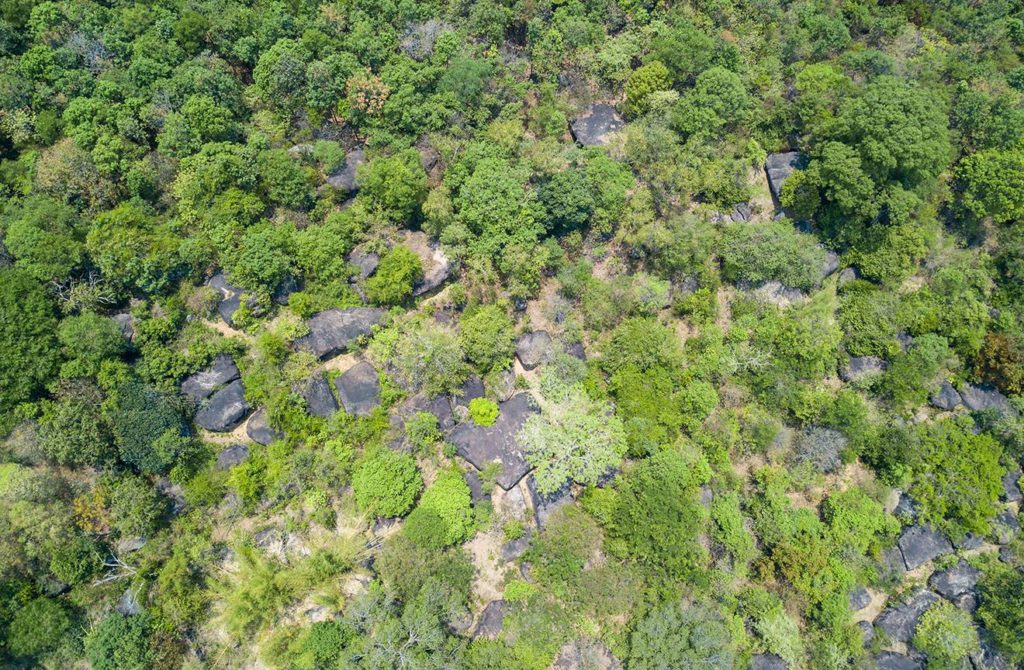
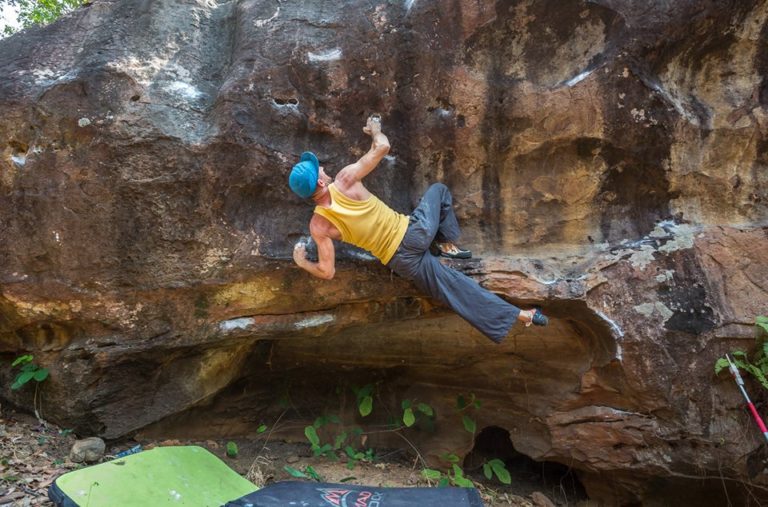
The discover of Zoolander bouldering area, which is located in Khon Kaen zoo.
Khon Kaen zoo’s private land is about 3,000 rai (5.34 sq.km.). However only 17.5% of the total area is used for animal husbandry, water park facilities and administrative offices. The rest is covered by forest hosting hundreds of sandstone boulder. Initial arrangements with the zoo officials and the signing of an official partnership between KKCC and the Zoo in October 2018 made climbing within the zoo’s administrative boundaries recognized and authorized by local authorities securing access and providing a forum for ongoing negotiation towards a lasting partnership. KKCC developers and many local and visiting climbers where therefore allowed to roam free in the non-commercial area of the park and developed the first boulder problems. While the first sector was developed near the water park, Zoolander (the cluster of sectors within the zoo administrative boundaries) is, at the time of this writing, composed of 9 sectors with an estimated total of 500+ boulders. Grade currently ranges from V0 to V11 across >500 lines developed so far, with lots of room for harder problems. The rock is high quality sandstone offering diverse climbing options and styles mostly thin technical climbing involving crimps and small edges in sometimes overhanging faces. KKCC recently collaborated with 27crags to offer an online topo to visiting climbers listing problem descriptions and boulder locations
This, together with the zoo ease of access from Khon Kaen city (and its airport), the availability of campground & cabins, drinking water, restaurants as well as the water park and animal area for days-off activities make Zoolander a very attractive bouldering destination with huge potential for continued growth in the future as demonstrated by the hosting of the 2nd Khon Kaen Bouldering festival (KKBF) in January 2019 bringing >100 participants from 19 countries to Zoolander. KKBF then became an annual event. Recently during KKBF2020 in January, Zoolander host more > 160 participants from 20 countries in a newly developed sector. The event has a very positive feedback from climbing communities. KKBF at this stage became one of the largest (and probably the best) outdoor climbing festivals in South East Asia.

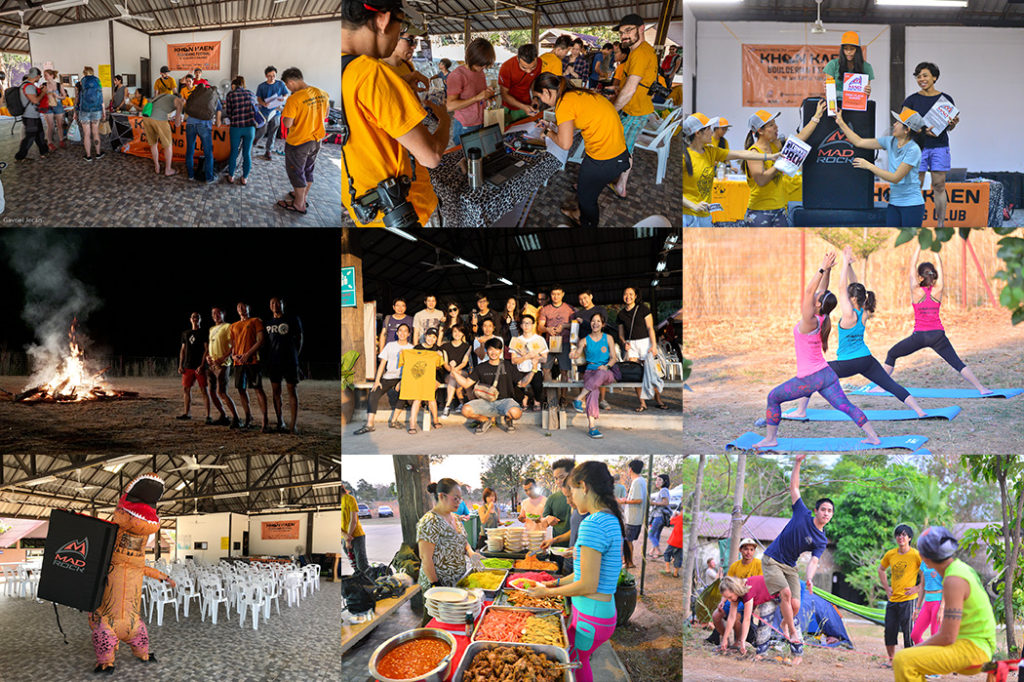
Sustainable practices and KKCC community vision
Rock climbing and bouldering help reconnect with nature, perhaps one of the great challenges of the 21st century. The need to respect and preserve the natural environment is never more apparent than to those who visit, explore and enjoy the landscape. Outdoor climbing is about being in nature which therefore aligns very well with the Sustainable Development Goals and its attributes which emphasize that a healthy, properly functioning natural environments are the foundation for sustained economic growth, prospering communities and personal wellbeing and that everyone should have fair access to a good quality natural environment. In UK, for example, the government’s National Ecosystem Assessment also asserts that the social benefits of people being able to access and enjoy the countryside is valued at £484 million per annum.
The harmful effects from disconnection with nature – sometimes called ‘Nature Deficit Disorder’ – are increasingly recognized by the scientific community. Public recreation and access to green spaces, such as Zoolander, are fundamental to people’s understanding and enjoyment of the natural environment. Unless people are able to access the natural environment they are unlikely to want to take action to enhance / conserve it – supporting recreational activities such as hiking and climbing are therefore key to connecting the public with the natural environment and can be considered as highly sustainable activities as they promote long term mutually beneficial interactions.

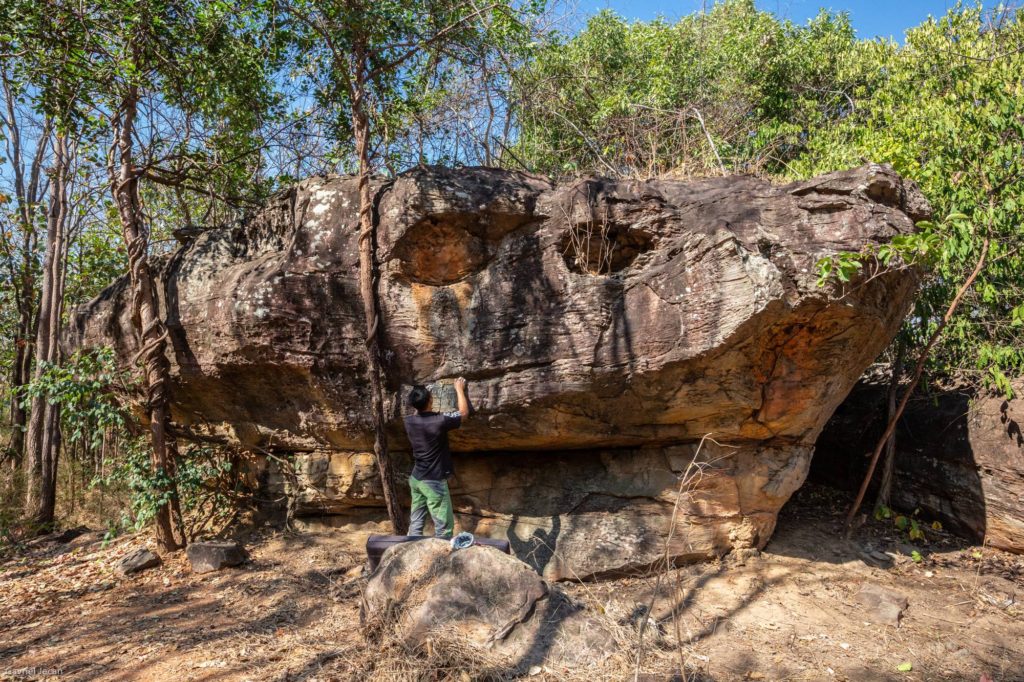
‘Before’ and ‘After’ boulder that was developed to climb in Zoolander.
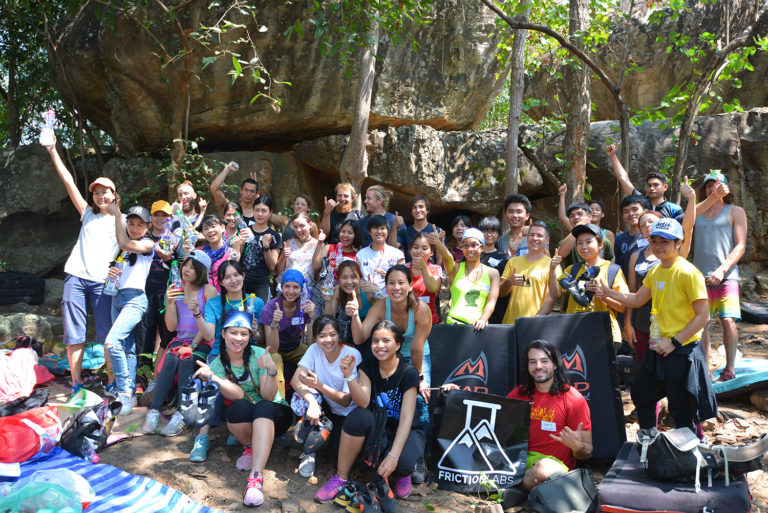
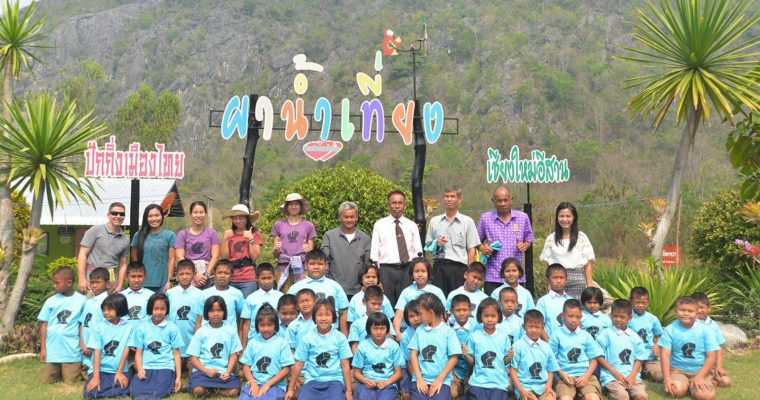
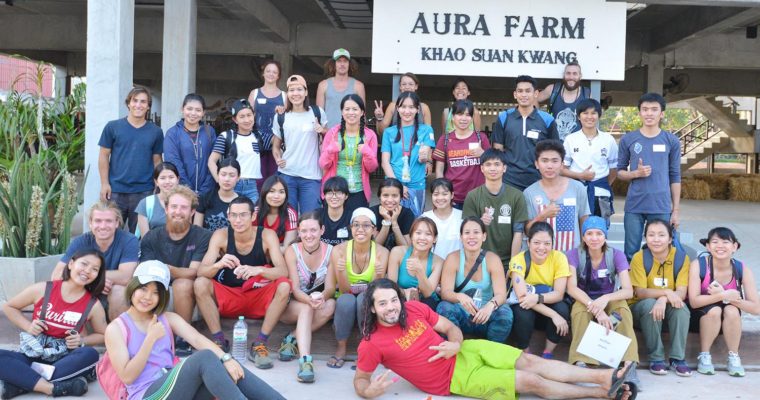
KKCC’s activities with locals: Volunteer and learn how to climb, Donation to a near by school, and support local business in the area.
As regional and local governments seek to open new areas to tourism, it is therefore important that they utilize alternative models of development. This involves moving away from a mass tourism based model towards a more sustainable localized model where a diluted but persistent flow of visitor sustain economic development with minimal impact on natural resources. Rock climbing is a good example of such a localized, environmentally sensitive development. The resources it targets are the rocks as they stand. There is no need to dig them out, no need to break them down, no needs to disrupt the ecosystems that they are embedded in. Climbers will specifically come to the area and spend their time, energy and money to make sure they can have access to the rocks and practice their passion. Thus, minimal development is needed, namely creating access to the rocks and supporting the development of the external services that will allow climbers and other nature enthusiasts to satisfy their basic needs, which are availability of food, shelter and toilets. Climbers will create demand for services such as creation of home stays in nearby villages, guest houses, dormitories in the park and the expansion of existing restaurants or convenience stores which in turn will benefit local communities.
In essence rock climbing will attract more visitors to the climbing areas and nearby communities and will contribute to increased local businesses income, in turn stimulating the creation of sustainable structures that will spawn a virtuous cycle resulting in benefits for the local environment and people. Aligning with these principles, KKCC has set strict principles guiding development practices in the park to insure minimal cut of vegetation to access boulders and open new lines, minimize environmental impact at all time, encourage regular clean up campaigns in climbing and non-climbing areas for the benefit of all, has set in place a no plastic policy, regularly invites local school children and local community members to participate in open events and gives priority to local community’s service and products in its operations.
Within 6 years, from its seminal development in Nam Phong National Park to the emergence and growth of Zoolander, KKCC has demonstrated its commitment to offer climbing as one of the main tourism attractions in Khon kaen province and its surrounding region, inviting along numerous local youths to become the rising stars of a new era.
By Pierre Echaubard, Wan Panitan Jutaporn, and the team.
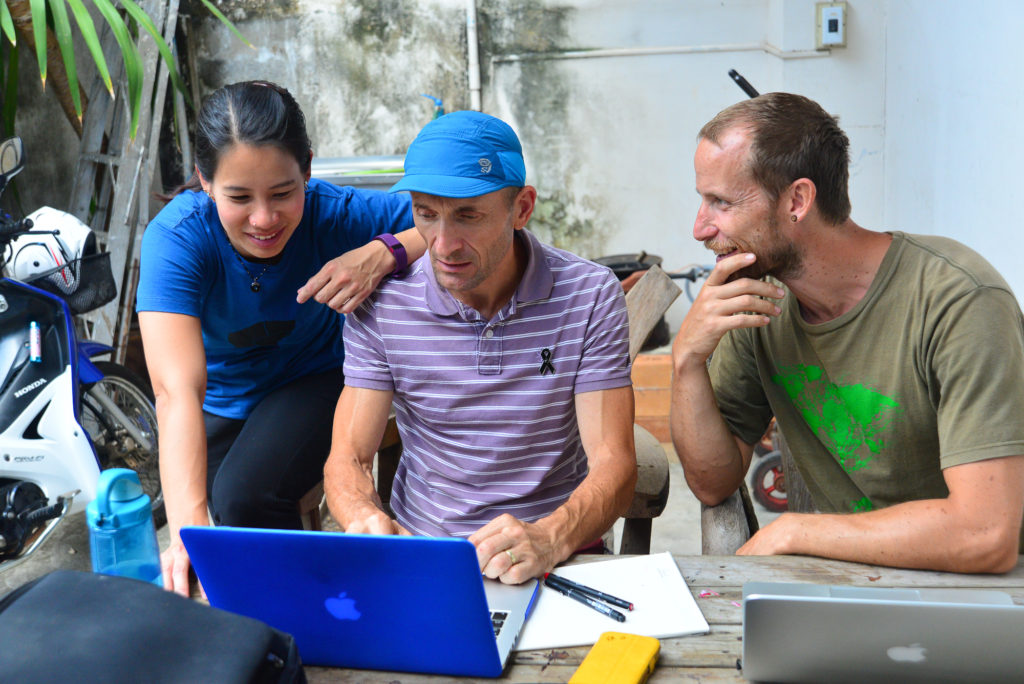
KKCC team members
Gavriel Jecan
Matthiew Foley
Pierre Echaubard
Panitan (Wan) Jutaporn
Apisit (Bon) Rapeepanpianpen
Joey Valenzuela
Tim Gill
Mark Brown
Fredrick Sundman
Meta (Ton) Leesirikul
Srirat (Opor) Suwanakom
Warankana (May) Intarapreecha
Nuttapong (Sun) Saelek
Nayawadee (PuiNune) Kaweenattayanon
Visiting developers
Michael and Amanda Price
Ross Tom
Kevin Marquardt
Brian Horlick
Cornelia Langer
Rene Atzi
Ou Xingpeng & JC
Liting Xu
And so many more…